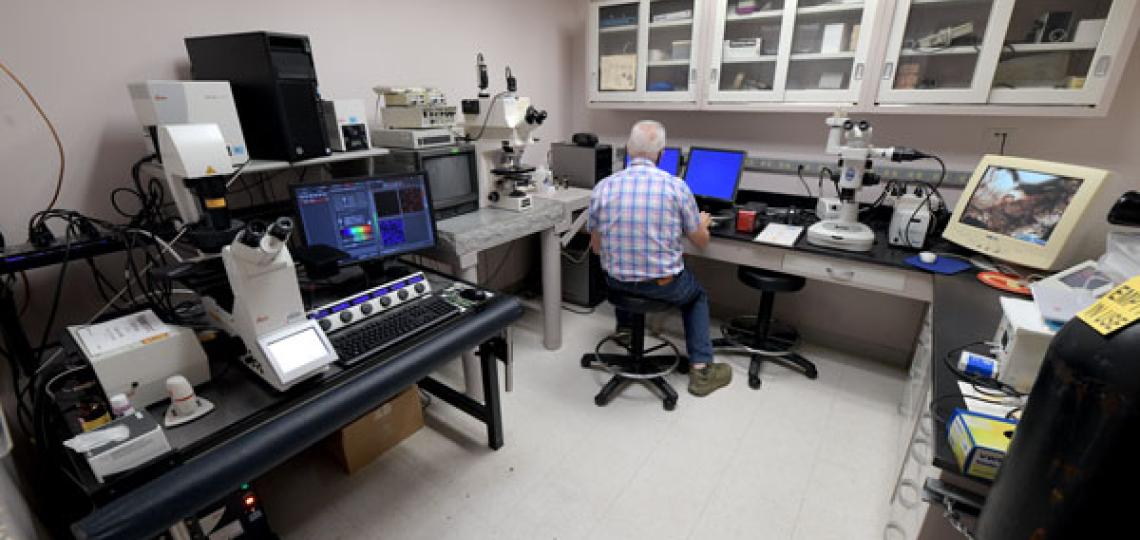
This is the main microscope room containing a Leica confocal, a Zeiss Axiophot, a Nikon SMZ1500 dissecting microscope and the Meyer Slide scanner.
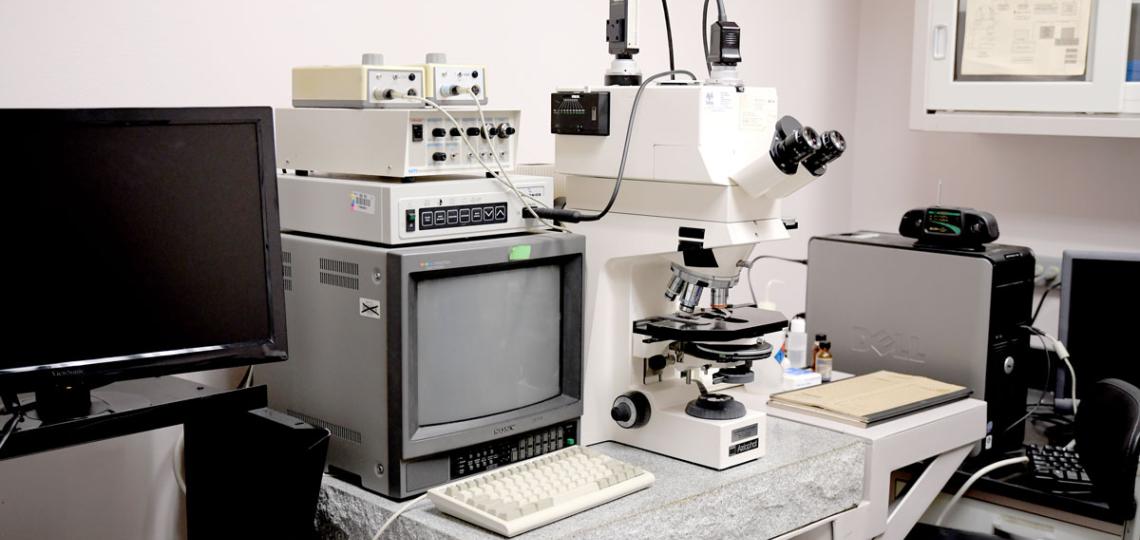
The Zeiss Axiophot microscope is capable for bright field and epifluorescent imaging with both black and white, and color CCD cameras.
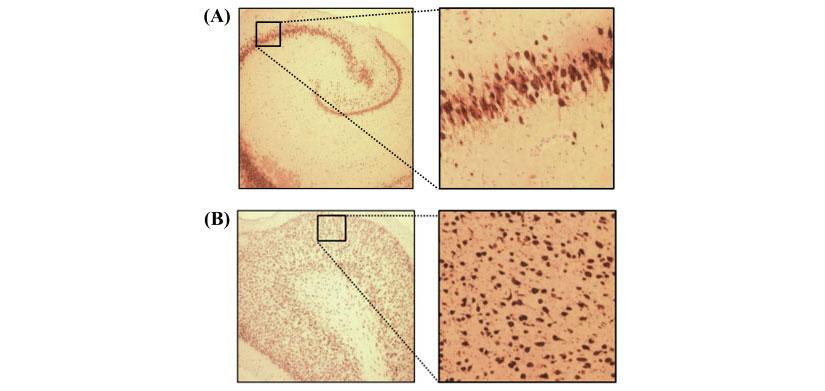
Bright field imaging from the Zeiss microscope of brain sections stained with a neuronal marker to test for differences in brain structure among pre-mature baby pigs given different formulations of TPN. These images were captured using a SPOT-SliderRT CCD camera.

The Leica SME Laser Scanning Confocal Microscope images 4 channels with excitation wavelengths of 405, 488, 563, and 633 nm. Channels are sequentially imaged using a tunable emission filter. The system is capable of automated tiling for multiple fields or image stacks as well as collection of time series data.
This scope has a fully motorized stage, which facilitates both the image tiling functions as well as the automated collection of z-stacks. Image brightness, background intensity, and focal plane, are all controlled through a digital console behind the keyboard.
This scope is integrated into an image analysis workstation that consists of a DELL Optiplex GX620 processor with a Radeon X600SE video card, Adobe Photoshop image processing software and ImagePro 10.0 image analysis software. The image analysis software consists of a basic analysis module with plug-in modules for image deconvolution (Sharp Stack Plus Ver 5.0), and 3 dimensional reconstruction (3D Constructor).

The Nikon SMZ 1500 dissecting microscope is capable of imaging bright-field and fluorescent specimens from 70x to 150x. The scope also has flexible top illumination to facilitate microdissections.

Meyer Slide scanner quickly collects images of stained tissues sections allowing a global view of tissue architecture.
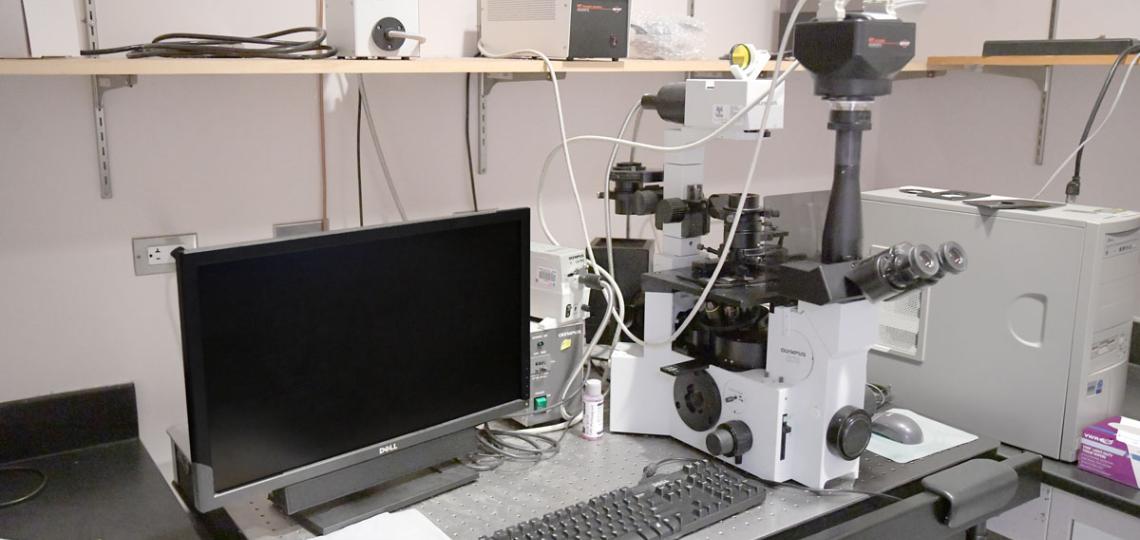
Olympus Fluoview confocal microscopy system consisting of an IX70 microscope, four lasers (blue diode, argon, green HeNe, and red HeNe) a laser combiner and FV300 confocal scanner, a bright-field detector, a Spot RT color CCD camera, a computer work station, and a Kodak 8600 dye-sublimation printer
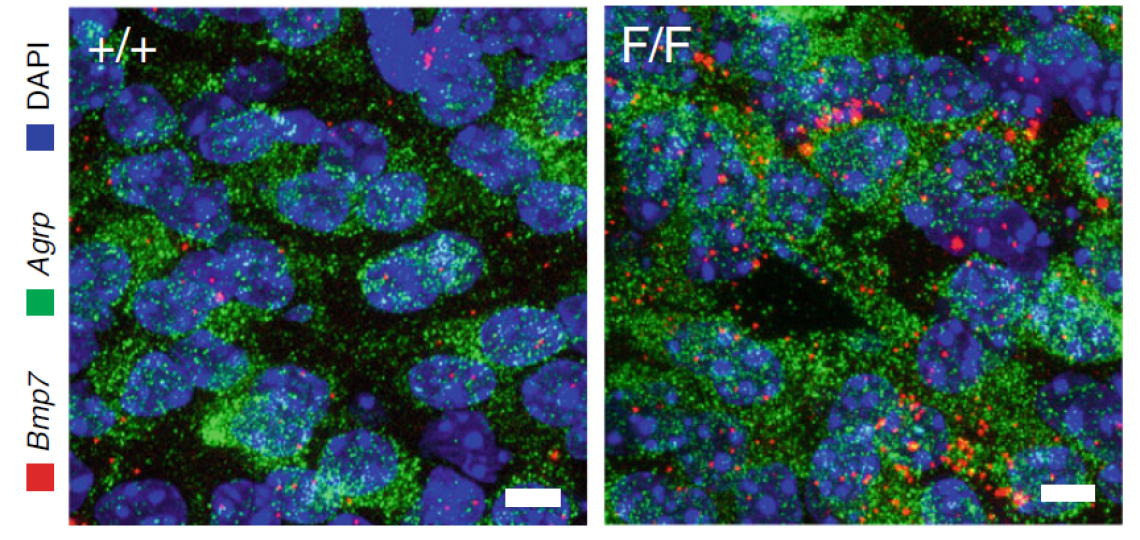

The Leica microtome is available by reservation to any user wishing to cut their own paraffin sections.
Questions
Questions concerning suitability of the system for particular applications can be directed to Dr. Yongjie Yang associate professor Pediatrics and Molecular and Cellular Biology.








